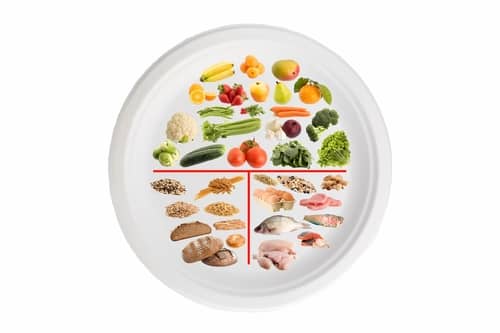Have you ever felt so overwhelmed with all of the information out there telling you how to eat well?
Here are 10 tips to help you create a more satisfying and well-rounded plate:
Include a variety of colorful vegetables: Aim to fill half of your plate with a colorful assortment of vegetables. Different vegetables provide various nutrients and add vibrancy to your plate. Choose a mix of leafy greens, cruciferous vegetables, root vegetables, and other colorful options.

Add lean protein: Incorporate a source of lean protein, such as grilled chicken, fish, tofu, beans, or legumes. Protein is essential for muscle growth and repair. Try to include protein from different sources to diversify your nutrient intake.
Go for whole grains: Instead of refined grains, choose whole grains like brown rice, quinoa, whole wheat pasta, or whole grain bread. These provide more fiber, vitamins, and minerals compared to their refined counterparts.

Consider portion sizes: Be mindful of portion sizes to ensure a balanced plate. Use smaller plates or bowls to help control portion sizes visually. Aim for a balance of protein, vegetables, and grains, with slightly larger portions of vegetables.

Incorporate healthy fats: Include sources of healthy fats like avocados, nuts, seeds, or olive oil. Healthy fats are important for nutrient absorption and satiety. However, be mindful of the portion sizes as fats are calorie-dense.
Pay attention to the cooking methods: Choose cooking methods that preserve the nutritional value of the food. Steaming, grilling, baking, or lightly sautéing are healthier options compared to deep-frying or heavy sauces.
Enhance flavors naturally: Instead of relying on excessive salt or processed sauces, experiment with herbs, spices, and natural flavor enhancers like lemon juice, lime juice, balsamic vinegar, or low-sodium soy sauce. These can add depth and complexity to your dish.
Consider cultural! Have fun with different cuisines and incorporate flavors from around the world. This can make your plate more interesting and provide a wider range of nutrients. One of my favorites right now is Mediterranean!
Mindful plating: Consider the visual appeal of your plate. Arrange the food in an aesthetically pleasing way, balancing colors, textures, and shapes. A visually appealing plate can enhance your experience, create something you WANT to eat!
Listen to your body: Pay attention to your hunger and fullness cues. Eat until you feel satisfied but not overly full. Practice mindful eating, savoring each bite, and enjoying the flavors and textures of the food.
Remember, creating a better plate is a personal journey! Explore! Try new foods! Keep it simple!
Protein & Fat & Carbohydrates & Flavor

.png)
.jpg)
No comments:
Post a Comment